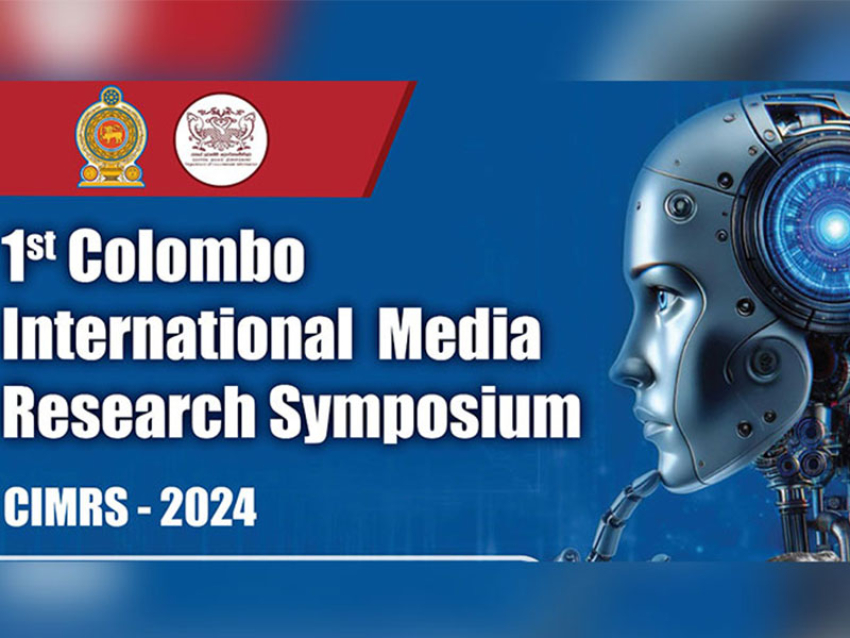There are many ways of categorising someone’s linguistic skills, but the concept of fluency is hard to define. Mayor Pete Buttigieg’s youth, military record, and marital status may distinguish him from the other 2020 US Presidential Election candidates, but it’s his rumoured proficiency in seven languages that really has people talking.
This seemingly magical feat is especially impressive in predominantly monolingual countries like the United States and the United Kingdom (where, respectively, roughly 80% and 62% of the population speaks only English). But where such enviable talent creates an aura of mystique, it also inevitably arouses curiosity. When former US Senator Claire McCaskill asked Buttigieg to comment on his language-speaking ability in a 14 February instalment of MSNBC’s Morning Joe, he replied: “it depends what you mean by speak!” and added that he can “still kind of read a newspaper in Norwegian… but only slowly” and that he has gotten “rusty” in his Arabic and Dari. That shows humility, but not so much that Buttigieg and his camp definitively dismiss the polyglot rumours.
This is not to deride Mayor Buttigieg. His perceived fluency interests me because I’m a former language teacher – having taught English for 11 years in Japan and Italy – and I am also a Cambridge English exam speaking examiner; a role which requires me to dissect variables in candidates’ second language production such as pronunciation, discourse management, and grammatical range. Buttigieg is clearly fascinated by languages, willing to learn, and is brave enough to practice with native speakers on television – qualities that would have made him the star of my classroom. But – like so many of my ex-students who expected to go from “beginner” to “native” proficiency in two months – Buttigieg may have underestimated what it means to “speak” a language.
I can relate all too well to overestimating one’s own abilities. A “heritage speaker” of Italian, I’d been living in Italy for two years when I overheard a receptionist refer me to me as “that foreigner who doesn’t speak Italian”. I was confused, then gutted. That one casual sentence launched a journey that resulted in my being forced to acknowledge that while I had grown up speaking Italian at home and was fluent, I was not by any means proficient.
What does the word “fluent” actually mean? In lay circles, this term has come to equal "native-level proficient", with no grey area between the bumbling beginner and the mellifluous master. An outsider overhearing a conversation in a foreign language only hears a fog of sounds, thus perceiving anyone who can cobble together a sentence as “fluent”.But Daniel Morgan, head of learning development at the Shenker Institutes of English – a popular chain of English schools in Italy – says that fluency actually refers to how “smoothly” and “efficiently” a second language (L2) speaker can speak on “a range of topics in real time”. While fluency may denote a degree of proficiency, it does not automatically imply accuracy – the ability to produce grammatically correct sentences – nor does it imply grammatical range.
How important are accuracy and grammatical range? That depends on the speaker’s needs. If they simply wish to converse in social settings, their focus may be solely on achieving fluency, but if the L2 is required for business or academia, accuracy and range are crucial as communications full of errors may be seen as unprofessional.When talking a foreign language, you may be well understood by locals, even if you make lots of grammatical errors (Credit: Alamy)These errors can include literal word-for-word translation from their native language (“I go in Spain”), and language switch (“I want eat ringo”). Bungled verb tenses, prepositions, plurals, and articles are a natural, even essential, part of the learning process.
Many learners, however, fall into the trap of assuming that because they are understood, their speech is “perfect”. And it isn’t only the speaker who glosses over mistakes; in the Handbook of Second Language Assessment, Nivja de Jong – senior lecturer at the Leiden University Centre for Linguistics – argues that grammatical errors usually won’t prevent comprehension on the part of the listener, who is automatically able to “edit out” mistakes. In English, a sentence like “I have 17 years” is incorrect, yet one nonetheless understands that the speaker wants to say that he is 17 years old. Furthermore, friends and teachers tend to encourage L2 learners rather than discourage them, which may also contribute to inflated self-assessment.
I think of the popular memes comparing how we envision a story or scene in our head, to the way we tell it or paint it. Those first crucial years of learning a language, you may be thinking in glorious brush strokes but speaking in scribbles.Measures of linguistic proficiency typically consider both the accuracy and the range of the language that you can use (Credit: Alamy)
So when can someone say they “speak” a language? That’s the million-dollar question. Can someone consider themselves a Spanish speaker if they’re conversational but often can’t understand native speakers because they “talk too fast”? If they use only two verb tenses and every sentence contains mistakes?
The answer may be less “yes/no” and more “how well?”
Luckily, scales for measuring spoken fluency and overall proficiency exist. “Fluency is an abstract concept, so we assign observable variables,” explains Daniel Morgan. Two of the most reliable factors are “speech rate” and “utterance length”. Speech rate can be defined as how much (effective) language you’re producing over time, for example how many syllables per minute. Utterance length is, as an average, how much you can produce between disfluencies (e.g. a pause or hesitation). You could look at accuracy as being subsumed into fluency, in terms of grammatical accuracy, lexical choice, pronunciation, and precision.”
De Jong describes the unconscious process any speaker goes through before speaking: conceptualising what to say, formulating how to say it, and, finally, articulating the appropriate sounds. All of this takes place in roughly six syllables per second. A speaker of a second language who needs to convert their thoughts into an unfamiliar language faces an even greater challenge in meeting these strict time constraints. They must also often overcome inhibition and pronunciation challenges. Accuracy may still be lacking at this stage, but make no mistake – achieving L2 fluency is a colossal feat.
The Council of Europe’s Common European Framework of References (CEFR) for Languages groups language learners into concrete proficiency levels, where fluency and accuracy are just two of many examined criteria. The CEFR – available in 40 languages – divides proficiency into six “can do” levels – A1, A2, B1, B2, C1, and C2. A corresponds to “Basic” levels, B to “Independent”, and C to “Proficient.” Observable skills include:
A1: Capabilities range include basic introductions and answering questions about personal details provided the listener speaks slowly and is willing to cooperate.A2: Can describe in simple terms aspects of his/her past, environment and matters related to his/her immediate needs and perform routine tasks requiring basic exchanges of information.
B1: Can deal with most daily life situations in the country where the language is spoken. Can describe experiences, dreams and ambitions and give brief reasons for opinions and goals.
B2: Can understand the themes of complex texts on both concrete and abstract topics and will have achieved a degree of fluency and spontaneity, which makes interaction with native speakers possible without significant strain for either party.
C1: Can understand a wide range of longer texts and recognise subtleties and implicit meaning; producing clear, well-structured and detailed text on complex subjects, showing controlled use of organisational patterns, connectors and cohesive devices.
C2: Can understand virtually everything heard or read, expressing themselves spontaneously, very fluently and precisely, while differentiating finer shades of meaning even in highly complex situations.
Geraint Thomas, a Cambridge English speaking exam team leader, explains: “We look at things like cohesion, response rate, discourse management, and pronunciation, but each variable has sub-variables. You can break pronunciation down into stress and individual sounds.” He emphasises that the progression is gradual. “You can expect a good B2 candidate to have certain things under control; the present tense, maybe. However, they might not have their second conditional, and you’re aware that this is a progressive thing.”
What is the span of your conversational abilities? Are you equally happy talking about economics and politics? Thomas adds that individual second language speakers can display different strengths: “You can get students who are very accurate but so afraid of making mistakes that their fluency suffers and others who throw themselves into something, who are quite fluent, but their language is full of mistakes.”
According to research from the University of Cambridge English Language Assessment, it takes 200 guided hours for a motivated learner to advance from one level to the next. Key word, motivated: language acquisition varies dramatically between individuals. Is the learner open to new structures? Will they build upon what they’ve already learned instead of clinging to basic “good enough” grammar? Will they commit to consistent study and practice? Bottom line: there are many steps between “The pen is on the table” and penning a perfect thesis on a piece of literature.
Proficiency scales provide an excellent gauge for assessing L2 ability, but I believe that the quickest, dirtiest fluency and accuracy “tests” are real-life situations with native speakers. How smooth and lengthy are your interactions in your L2? Do you avoid or “blank” at certain topics and situations because you don’t have the words? Do you find yourself grasping for “key words” and content yourself with understanding “the sense” rather than the entirety of the conversation? How well can you understand a film without subtitles or read a book without a dictionary? If you write an email and ask a native speaker to proofread it, how many errors will they find?
As for me, while my Italian grammatical range has improved dramatically in my nine years in Italy, as a writer I yearn for flawless, native-like accuracy and syntax. I’m not there yet, and there are many days where I despair that I never will be.And then I remind myself that learning a second language is like entering into a marriage. You think you know your partner when you put the ring on their finger, but it’s only the beginning, and the commitment is for life.
(Credit: Getty)
In Depth Language
The man bringing dead languages back to life
Ghil’ad Zuckermann has found that resurrecting lost languages may bring many benefits to indigenous populations – with knock-on effects for their health and happiness.Like many people in Australia, Professor Ghil’ad Zuckermann is a regular contributor to the fund to save the Tasmanian Devil. The Tasmanian Devil, which Zuckermann remarks is an “ugly animal”, is listed as endangered, along with much of the unique and beautiful wildlife that makes Australia such a distinctive and enigmatic place. Yet animal life is not the only thing that has struggled to keep up with the pressures of modern life down under.
Before European colonisers arrived, Australia used to be one of the most linguistically diverse areas in the world, boasting around 250 different languagesWhile Australia may be famous the world over for its biodiversity, for a linguistics professor like Zuckermann, the country has another allure: its languages. Before European colonisers arrived, Australia used to be one of the most linguistically diverse areas in the world, boasting around 250 different languages. Due in part to Australia’s long geographic isolation, many of these had developed unique grammatical structures and concepts that were unknown to languages in other parts of the world.
One of these is a language called Guugu Yimithirr, spoken in the north of Queensland, which gave the world the word "kangaroo". It’s also made remarkable by the fact that unlike languages like English, it does not make use of ego-centric positioning systems such as "left" and "right". Instead, all speakers of Guugu Yimithirr have an in-built compass in their brain that allows them to always know where is north, south, east and west. Therefore, they have no need to talk about the "left tap" or the "right tap". Instead, they just refer to the "north tap" or the "south tap".
But according to the 2016 Australian census, Guugu Yimithirr has just 775 native speakers alive today, with numbers on the decline. Of the 250 languages spoken before settlers arrived, today all but 13 of them are considered to be "highly endangered" – a fact that is often overlooked.
A protest for Aboriginal rights in Melbourne, Australia. The recognition and appreciation of indigenous languages is one of many issues affecting these communities “I believe that most people care more about animals that are endangered than about languages that are endangered,” Zuckerman explains. “The reason is that animals are tangible. You can touch a koala, even though in the wild you’d be crazy to do so because she can kill you with her claws. But koalas are cute. Languages, however, are not tangible. They are abstract. People understand the importance of biodiversity far more than that of linguistic diversity.”
Yet for Zuckermann, preserving linguistic diversity is hugely important. For indigenous communities in Australia and worldwide that are still grappling with the legacy of colonisation, being able to speak their ancestral language is about empowerment and reclaiming their identity. It may even carry significant consequences for their mental health.
Ghil’ad Zuckermann first visited Australia in 2004. He felt so overcome with love for what he describes as the most beautiful country he’d ever seen that he decided he wanted to do something to help it. As a linguistics professor from Israel, the son of a Holocaust survivor, and a specialist at the time in the analysis of the Hebrew language revival, he quickly identified an area where he could have an impact: the revival and empowerment of Aboriginal languages and cultures.
Zuckermann first established the trans-disciplinary field of enquiry called “Revivalistics”, which focuses on supporting the survival, revival and reinvigoration of endangered and extinct languages all around the world. These range from languages such as Hebrew, Welsh, Cornish and Irish, to Hawaiian, North American languages like Wampanoag and Myaamia, and many others.
The language spoken by Guugu Yimithirr people, who are pictured here, is just one of many Aboriginal tongues that are now endangered As an Israeli, Zuckermann grew up a native speaker of Modern Hebrew, arguably the world’s most successful example of language revival to date. Hebrew was extinct for almost 2,000 years until Zionist language revivalists began to bring it back into use in the late 19th Century. They achieved this by adapting the ancient language of the Torah so that it could be suitable for modern life. It would eventually become the mother tongue of all Jews in the new state of Israel, founded in 1948.
Zuckermann’s expertise and personal experience with Modern Hebrew greatly informs his work in Australia today, precisely because he takes a critical view of it. He argues that the language spoken natively by millions of people in Israel today and that they call Hebrew is not, and could not be, the same language of the Bible.
“The Jews did not manage to revive the language of Isaiah. It is simply impossible to revive a language as it used to be.” Instead, Zuckermann explains that Modern Hebrew, which he controversially refers to as "Israeli", is a hybrid language, drawing on the influences that Jewish migrants brought with them to Israel from their native languages, such as Yiddish, Polish, Russian and Arabic. Over the course of generations, these blended together to shape the language in its modern form. According to Zuckermann, this should not be seen as a problem. These changes are a natural and necessary part of the process of reviving a language.
Modern Hebrew is very different from the ancient language - but it has now developed a life of its own “I take into consideration the speaker more than the language. A speaker of Yiddish could not get rid of their Yiddish Weltanschauung or mindset, even though they hated Yiddish and wanted to speak Hebrew. But the moment a person understands the importance of the native speaker at the expense of linguistic purism and authenticity of the language, that person can be a good revivalist.”
Sleeping beauties
Much of Zuckermann’s work in Australia has centred on Barngarla, a dead language – Zuckermann prefers the term “sleeping beauty” – that was spoken in the rural areas of southern Australia between the cities of Port Augusta, Port Lincoln and Whyalla. The last native speaker, Moonie Davis, passed away in 1960. Yet when Zuckerman reached out to the Barngarla community and proposed that he help revive their language and their culture, he was amazed by their response. “We have been waiting for you for 50 years,” they told him.
Zuckermann’s starting point was a dictionary written by a Lutheran missionary called Robert Schürmann in 1844. In 2011, Zuckermann began making regular trips to Barngarla country to run language revival workshops. Together, and with Zuckermann’s help and guidance, the Barngarla community built upon the knowledge stored within Schürmann’s 1844 dictionary. They pooled together what they could remember of words they’d heard their parents and grandparents saying.
They also held discussions about how to devise appropriate words that could apply to modern life. Should Barngarla follow English’s precedent and refer to the computer using the metaphor of ‘computing’ something? Or should they instead look to Mandarin Chinese, whose word 电脑 (diànnǎo) literally means “electric brain”?
The result is modern-day Barngarla, a language that has been revived in a form that is as close as possible to the Barngarla that was spoken before its last native speaker died out. Yet inevitably, as with the case of Modern Hebrew, it will never fully be the same. Too much time has passed, and there has been too much influence from the colonial language, in this case English, for today’s Barngarla to be a carbon copy. It too is a hybrid language, yet one that the Barngarla community can feel proud to speak once more. For Zuckermann, there is nothing wrong with that. In fact, quite the opposite: “Hybridity results in new linguistic diversity.”
Linguicide
“Linguicide” – the killing of language – sits amongst the 10 forms of genocide that are recognised by the United Nations. The Barngarla language did not die out in 1960 solely due to natural causes. Like many Aboriginal languages, in the early to mid-20th Century it was actively destroyed and subjected to the cruel and imperialistic policies of the Australian government at the time, who removed children from their mothers and sent them to boarding schools thousands of miles away. There, they learned English and quickly forgot their mother tongue. If they ever returned to their ancestral homelands, they found themselves unable to communicate with their own families, as they no longer shared a common language.
The resuscitation of Aboriginal languages could coincide with a greater appreciation of these communities' art and culture (Credit: Alamy) Lavinia Richards is one of the "stolen generation". She remembers the trauma of being forcibly separated from her mother by the Australian authorities and forced to speak a foreign language – English. When the Barngarla community released a CD of stories and songs of Barngarla people affected by the "stolen generation" in June 2018, she included on it a poem that she wrote about a flower she saw that reminded her of her mother, a reminder of a life that was denied to her because she was born speaking the wrong language.
For Zuckermann, there are three reasons why people should support language revival. The first is the simple ethical matter of righting the wrongs of colonial linguistic supremacy. Zuckermann states that the very fact that the Australian government at the time actively tried to destroy Australia’s unique linguistic diversity, driven perhaps by the racist notions of politicians such as Anthony Forster, who in 1843 declared “the natives would be sooner civilised if their language was extinct”, is convincing enough for him.
However, Zuckermann’s second reason is utilitarian. Language revival is about far more than just communication. He argues that it is about “culture, cultural autonomy, intellectual sovereignty, spirituality, well-being, and the soul”. When you lose your language, you lose your soul - Ghil’ad Zuckermann “When you lose your language, you lose your soul. When you revive your language, you don’t only revive its sounds, its words, its morphemes and its phonemes. You revive the whole shebang.”
Over his many years of working in language revival, Zuckermann has become increasingly convinced of a clear trend. He believes that amongst Aboriginal communities that have reclaimed their ancestral language, he has observed greatly improved physical and mental health. He sees a sharp drop in incidences of suicide, alcoholism, addiction and diabetes – problems that unfortunately are rife amongst Aboriginal people across Australia.
These are only anecdotal observations but in 2017, he began a five-year study to see whether he could find hard evidence to support the theory. Should he be proven right, he believes that this should give the Australian government enough cause to support language revival programmes across the country through healthcare funding from tax payers’ money.
(Credit: Alamy)
One study from Canada found that communities who have retained their indigenous language tend to have lower suicide rates (Credit: Alamy)
A preliminary investigation in 2007 from the University of Oxford, University of British Columbia and the University of Victoria in Canada seems to support Zuckermann’s claims. By analysing Canadian census data, the researchers discovered that youth suicide rates “effectively dropped to zero in the few communities where at least half of the members reported a conversational level of their ‘Native’ language”.
“I really believe that billions of dollars in Australia have been wasted on stupid, medically approved programmes. I can prove qualitatively and quantitatively that language revival results in better health," Zuckermann says.
“You kill the language of an Aboriginal community, you cause depression. You cause depression, you cause people to lose their will to take care of their body.”
The third and final reason Zuckermann cites for supporting language revival is aesthetic. In other words, the co-existence of so many distinct and unique languages is beautiful. Australia’s multilingualism is like the human reflection of the biodiversity for which the country is so well known. Yet Zuckermann is aware that of all of his arguments, this is the one that may meet its toughest reception amongst the wider public.
For Candace Kaleimamoowahinekapu Galla, a native Hawaiian and associate professor at the University of British Columbia, speaking her ancestral language and promoting its use amongst her fellow Hawaiians is about something simple, yet fundamental. It’s about pride. “But not in an egotistical way,” she is quick to clarify. “It’s a humbling pride. It’s about accessing documents, newspapers or stories from the 1800s and understanding them on a different level to just reading them through an English translation.”
(Credit: Getty)
Knowledge of the indigenous language can increase the appreciate of other forms of cultural expression, like song and dance (Credit: Getty)
Galla describes the Hawaiian language as the foundation of everything distinguishing about Hawaiian culture. She believes that even the famous Hula dance, which has risen to the status of something of a global phenomenon, is impossible to truly perform without understanding Hawaiian, the lyric and the motion behind the lyric. Without an appreciation for those things, you are “just learning choreography”, according to Galla. “You can’t dance Hula without Hawaiian. You can dance, but it’s not Hula.”Looking to the future, Zuckermann has grand plans. After his decisions to found Revivalistics and to work with the Barngarla community, he says that his next step is to spread the message far and wide.Since running his first online open-access course on language revival in 2014, he has so far had more than 11,000 participants in 188 countries, including in Afghanistan, Syria, and countries where genocide and linguicide are common. “I want to reach people who are not academic. People who are language activists, but who do not go to university and do not have money to do things. People who would like to revive their language.”
The English language may be one of the richest in the world. It draws on its unique combination of a Germanic heritage and strong Romance influences to offer speakers a broad range of nuances when expressing themselves. Just consider the difference between a ‘hearty welcome’ and a ‘cordial reception’ to see where the possibilities lie.
Yet, as English continues to rise as the world’s de facto lingua franca, it’s important to also remember its limitations. Languages encapsulate culture. They are an embodiment of the way in which a particular group of people has agreed to communicate. As a result, they reflect those people’s experiences of the world through the idioms and expressions that become common parlance.
Learning other languages offers insights into the way that other cultures see the world. For someone like myself, gaining those insights can become addictive, and that fixation has led me to study 15 different languages. My recent book, 'From Amourette to Żal: Bizarre and Beautiful Words from Around Europe', explores some of the words that other languages have, but that English doesn’t. The following 10 words, for example, describe character traits and behaviours that may be familiar to us all, but that the English language struggles to succinctly express.
- Sortable / Insortable [adjective] – French
Literally ‘un-take-out-able’: the kind of person you would rather meet up with at home than in public (Credit: Javier Hirschfeld/Getty Images)
There are certain people in your life, such as friends or relatives, who you would rather meet up with at home than in public. Maybe it’s just that every time you go out with them for a meal they end up causing some kind of scene like striking up conversation with the couple in the corner who just want to be left alone, arguing with the waiters, or asking you about your personal life in a very loud voice around others. The French language describes those people as insortable, which means ‘un-take-out-able’.
However, those people that you would like to be seen in public with and that don’t manage to humiliate you so badly, are the opposite of insortable. They are sortable, or ‘take-out-able’, because you want to parade around with them everywhere.
- Polgárpukkasztás [noun] – Hungarian
(Credit: Javier Hirschfeld/Getty Images)
Literally "citizens explode". Someone who shocks the bourgeoisie (Credit: Javier Hirschfeld/Getty Images)
One thing that may make somebody sortable or insortable, depending on your viewpoint, is this character trait captured perfectly by the Hungarian word polgárpukkasztás. This refers to when people like to do things that really shock people. For example, when Lady Gaga turned up at the 2010 MTV Video Music Awards dressed entirely in raw beef.
It’s possible to be polgárpukkasztás without being a world famous celebrity, of course. Any individual actions that shock ordinary, middle-class people who are just looking for a quiet life, count. The Hungarian word means ‘citizen-explode’, and is derived from the rallying cry of the French decadent poets of the late 19th Century to épater la bourgeoisie, or ‘shock the bourgeoisie’.
- Γρουσούζης (groosoozis) [noun] – Greek
(Credit: Javier Hirschfeld/Getty Images)
Someone who is not just a bit unlucky, but a magnet for misfortune (Credit: Javier Hirschfeld/Getty Images)
It doesn’t matter what they do. For some reason, some people just seem to bring bad luck. They’re the kind of people whose toast always lands buttered side down. They’re the kind of people whose phones miraculously die, even though just a second ago it said they had 51% battery left. Whatever they touch seems to break instantly, and worst of all, there’s practically nothing they can do about it.
The Greek language doesn’t try in vain to rationalise this predicament any more than it should be. Instead, it simply places those who find themselves in it into a category of their own. A γρουσούζης (groosoozis) is not just someone who is a bit unlucky sometimes, but someone who is a magnet for misfortune.
- Mimoso [adjective] – Spanish
(Credit: Javier Hirschfeld/Getty Images)
Someone is constantly physically in touch with those around them (Credit: Javier Hirschfeld/Getty Images)
Meeting people for the first time in British culture can often be a moment for some awkwardness. As there is no universally established norm for how to greet somebody you don’t know, you are forced to assess each person on a case by case basis and make a judgement as to whether or not they’d prefer a handshake, a kiss on the cheek, a bear hug, or just a stilted wave.
We may deduce from this that we have an awkward relationship with physical contact in the UK. Personal space has differing degrees of importance to different people. However, within that spectrum there are those who love giving and receiving hugs, offering supportive pats on the back and express their affection for you by literally reaching out. The Spanish word mimoso perfectly captures those people who are constantly physically in touch with those around them.
- Pantofolaio [noun] – Italian
(Credit: Javier Hirschfeld/Getty Images)
Those people who are so lazy that they just spend all day lounging about in their slippers (Credit: Javier Hirschfeld/Getty Images)
Some people may enjoy leaping out of bed at the crack of dawn, putting on their running shoes and kicking off their day of spectacular productivity with a pre-work workout. For others, though, their day may never quite reach these heights of activity. Instead they might choose to roll out of bed at a more leisurely hour. And then, once they’re up and about, the only type of footwear they would ever choose to don would be a pair of comfortable slippers, which they’ll happily walk around their home in all day, before they take them off again to go back to bed.
Those people who are so lazy that they just spend all day lounging about in their slippers are known as pantofolaio, which essentially means a ‘slippers-person’.
- Ochtendhumeur [noun] – Dutch
(Credit: Getty Images)
'Morning humour': the foul mood that many people feel when they have risen early in the morning (Credit: Getty Images)
The idea of getting to work every day at 9:00 and launching straight into meetings with overwhelming enthusiasm may not appeal to everyone. For some people, even though they may physically be present much earlier, the day only really starts around lunchtime. Before then, you may want to avoid approaching them or aggravating them too much, because simply they are not in the mood.
That foul mood is known in Dutch as ochtendhumeur, or ‘morning humour’. So next time you see someone looking grumpy as they sip a cup of coffee in the early hours, don’t mistake them for being an inherently hostile or unapproachable person. It’s probably just that they’ve got ochtendhumeur and the moment the clocks strike noon their spirits will begin to lift.
- Почемучка (pachemuchka) [noun] – Russian
(Credit: Javier Hirschfeld/Getty Images)
Some people just won't stop asking questions. They are ‘little-why-people’ (Credit: Javier Hirschfeld/Getty Images)
Some people are happy to take life as it is served to them. Others can be slightly more inquisitive, and may instead choose to question everything. Why is the sky blue? Why are there stars in the sky? Why are there only 24 hours in a day? Why do we drive on the left? No matter what you tell them, they are just inclined to constantly ask questions until their insatiable curiosity has been satisfied.
In Russian those people who just won’t stop asking “why?” are called почемучка (pachemuchka), which is extremely hard to translate into English. The word почему means ‘why’, and the -чка ending is an affectionate way to describe someone. It can roughly be explained as ‘little-why-people’.
- Aktivansteher [noun] – German
(Credit: Javier Hirschfeld/Getty Images)
Literally an ‘active queuer’ - someone who is a real pro at standing in line and waiting their turn (Credit: Javier Hirschfeld/Getty Images)
In the UK, the art of queuing up tends to be seen as one of those national traits that are as quintessentially British as putting milk in your tea. We pride ourselves on the nobility, civility and patience of awaiting your turn. In reality, though, there is a hidden art to getting through a queue, far more quickly than others.
That person who is able to examine a queue and then quickly spot which line is moving faster than the others, and miraculously manages to find themselves ahead of those they started behind, has got a special name in German: an aktivansteher. This means an ‘active queuer’, which is another way of saying that when it comes to queuing, they are a pro.
- Menefreghista [noun / adjective] – Italian
(Credit: Javier Hirschfeld/Getty Images)
An 'I-don't-care-ist', someone who is overly complacent, indifferent or apathetic (Credit: Javier Hirschfeld/Getty Images)
Some people just don’t seem to care about other people, other people’s problems, or really anything in particular. Nothing gets their blood flowing at all. They seem almost incapable of feeling emotions about things.
Italian has a special word reserved for those people and that attitude: menefreghista. It comes from the expression non me ne frega niente, which means ‘I don’t care about that at all’. The word menefreghista, therefore, means something like an ‘I-don’t-care-ist’.
Things that fall into the category of menefreghismo are people being overly arrogant about something, complacency, indifference, and any act that you can imagine was sparked by somebody at some point saying non me ne frega niente. Of course, governments and their policies can also be accused of being menefreghista.
- Milozvučan [adjective] – Bosnian/Croatian/Serbian
(Credit: Javier Hirschfeld/Getty Images)
Literally ‘sweetly-sounding’: someone who is naturally gifted with a beautiful singing voice (Credit: Javier Hirschfeld/Getty Images)
Sing-alongs in the car are a great time to get to know your friends a bit better. You can all have a good laugh at your dire singing abilities and the fact that none of you really know the words. However, what if it emerges that one of your friends has been sitting on a hidden talent? While the rest of you whine away like stray cats, when that one friend opens their mouth and starts singing it sounds like the music of angels. What would you call that?
In the languages spoken in Bosnia, Croatia and Serbia, there is a special word for those that are gifted with a beautiful singing voice. They are called milozvučan, which literally means ‘sweetly-sounding’
Accessibility links
Skip to contentAccessibility Help
Sign in
News
Sport
Reel
Worklife
Travel
Future
More
Search the BBC
Search
Search the BBC
Future
What is BBC Future?
Latest
Best of..
NEW SERIES
Follow the Food
TOMORROW'S TRENDS
Future Now
Getty Images 106746616
Mosaic@Future
The amazing benefits of being bilingual
Most people in the world speak more than one language, suggesting the human brain evolved to work in multiple tongues. If so, asks Gaia Vince, are those of us who speak only one language missing out?
Share on Facebook
Share on Twitter
Share on Reddit
Share on LinkedIn
Share on Google+
Share by Email
By Gaia Vince From Mosaic
12 August 2016
In a cafe in south London, two construction workers are engaged in cheerful banter, tossing words back and forth. Their cutlery dances during more emphatic gesticulations and they occasionally break off into loud guffaws. They are discussing a woman, that much is clear, but the details are lost on me. It’s a shame, because their conversation looks fun and interesting, especially to a nosy person like me. But I don’t speak their language.
Out of curiosity, I interrupt them to ask what they are speaking. With friendly smiles, they both switch easily to English, explaining that they are South Africans and had been speaking Xhosa. In Johannesburg, where they are from, most people speak at least five languages, says one of them, Theo Morris. For example, Theo’s mother’s language is Sotho, his father’s is Zulu, he learned Xhosa and Ndebele from his friends and neighbours, and English and Afrikaans at school. “I went to Germany before I came here, so I also speak German,” he adds.
Was it easy to learn so many languages?
“Yes, it’s normal,” he laughs.
He’s right. Around the world, more than half of people – estimates vary from 60 to 75 per cent – speak at least two languages. Many countries have more than one official national language – South Africa has 11. People are increasingly expected to speak, read and write at least one of a handful of “super” languages, such as English, Chinese, Hindi, Spanish or Arabic, as well. So to be monolingual, as many native English speakers are, is to be in the minority, and perhaps to be missing out.
Multilingualism has been shown to have many social, psychological and lifestyle advantages. Moreover, researchers are finding a swathe of health benefits from speaking more than one language, including faster stroke recovery and delayed onset of dementia.
At the current rate, half our languages will be extinct by the end of the century
Could it be that the human brain evolved to be multilingual – that those who speak only one language are not exploiting their full potential? And in a world that is losing languages faster than ever – at the current rate of one a fortnight, half our languages will be extinct by the end of the century – what will happen if the current rich diversity of languages disappears and most of us end up speaking only one?
(Credit: Getty Images)
As adults, we try desperately to decipher a foreign tongue - but we may learn quicker if we stop looking for patterns that aren't there (Credit: Getty Images)
I am sitting in a laboratory, headphones on, looking at pictures of snowflakes on a computer. As each pair of snowflakes appears, I hear a description of one of them through the headphones. All I have to do is decide which snowflake is being described. The only catch is that the descriptions are in a completely invented language called Syntaflake.
It’s part of an experiment by Panos Athanasopoulos, an ebullient Greek with a passion for languages. Professor of psycholinguistics and bilingual cognition at Lancaster University, he’s at the forefront of a new wave of research into the bilingual mind. As you might expect, his lab is a Babel of different nationalities and languages – but no one here grew up speaking Syntaflake.
The task is profoundly strange and incredibly difficult. Usually, when interacting in a foreign language, there are clues to help you decipher the meaning. The speaker might point to the snowflake as they speak, use their hands to demonstrate shapes or their fingers to count out numbers, for example. Here I have no such clues and, it being a made-up language, I can’t even rely on picking up similarities to languages I already know.
After a time, though, I begin to feel a pattern might be emerging with the syntax and sounds. I decide to be mathematical about it and get out pen and paper to plot any rules that emerge, determined not to “fail” the test.
The experience reminds me of a time I arrived in a rural town a few hours outside Beijing and was forced to make myself understood in a language I could neither speak nor read, among people for whom English was similarly alien. But even then, there had been clues… Now, without any accompanying human interaction, the rules governing the sounds I’m hearing remain elusive, and at the end of the session I have to admit defeat.
I join Athanasopoulos for a chat while my performance is being analysed by his team.
Glumly, I recount my difficulties at learning the language, despite my best efforts. But it appears that was where I went wrong: “The people who perform best on this task are the ones who don’t care at all about the task and just want to get it over as soon as possible. Students and teaching staff who try to work it out and find a pattern always do worst,” he says.
“It’s impossible in the time given to decipher the rules of the language and make sense of what’s being said to you. But your brain is primed to work it out subconsciously. That’s why, if you don’t think about it, you’ll do okay in the test – children do the best.”
(Credit: Getty Images)
Language is intimately connected to culture and politics (Credit: Getty Images)
The first words ever uttered may have been as far back as 250,000 years ago, once our ancestors stood up on two legs and freed the ribcage from weight-bearing tasks, allowing fine nerve control of breathing and pitch to develop. And when humans had got one language, it wouldn’t have been long before we had many.
Language evolution can be compared to biological evolution, but whereas genetic change is driven by environmental pressures, languages change and develop through social pressures. Over time, different groups of early humans would have found themselves speaking different languages. Then, in order to communicate with other groups – for trade, travel and so on – it would have been necessary for some members of a family or band to speak other tongues.
We can get some sense of how prevalent multilingualism may have been from the few hunter-gatherer peoples who survive today. “If you look at modern hunter-gatherers, they are almost all multilingual,” says Thomas Bak, a cognitive neurologist who studies the science of languages at the University of Edinburgh. “The rule is that one mustn’t marry anyone in the same tribe or clan to have a child – it’s taboo. So every single child’s mum and dad speak a different language.”
In Aboriginal Australia, where more than 130 indigenous languages are still spoken, multilingualism is part of the landscape. “You will be walking and talking with someone, and then you might cross a small river and suddenly your companion will switch to another language,” says Bak. “People speak the language of the earth.” This is true elsewhere, too. “Consider in Belgium: you take a train in Liège, the announcements are in French first. Then, pass through Loewen, where the announcements will be in Dutch first, and then in Brussels it reverts back to French first.”
The connection with culture and geography is why Athanasopoulos invented a new language for the snowflake test. Part of his research lies in trying to tease out the language from the culture it is threaded within, he explains.
Being so bound up with identity, language is also deeply political. The emergence of European nation states and the growth of imperialism during the 19th century meant it was regarded as disloyal to speak anything other than the one national language. This perhaps contributed to the widely held opinion – particularly in Britain and the US – that bringing up children to be bilingual was harmful to their health and to society more generally.
There were warnings that bilingual children would be confused by two languages, have lower intelligence and behave in deviant ways
There were warnings that bilingual children would be confused by two languages, have lower intelligence, low self-esteem, behave in deviant ways, develop a split personality and even become schizophrenic. It is a view that persisted until very recently, discouraging many immigrant parents from using their own mother tongue to speak to their children, for instance. This is in spite of a 1962 experiment, ignored for decades, which showed that bilingual children did better than monolinguals in both verbal and non-verbal intelligence tests.
However, research in the last decade by neurologists, psychologists and linguists, using the latest brain-imaging tools, is revealing a swathe of cognitive benefits for bilinguals. It’s all to do with how our ever-flexible minds learn to multitask.
Split personality
Ask me in English what my favourite food is, and I will picture myself in London choosing from the options I enjoy there. But ask me in French, and I transport myself to Paris, where the options I’ll choose from are different. So the same deeply personal question gets a different answer depending on the language in which you’re asking me. This idea that you gain a new personality with every language you speak, that you act differently when speaking different languages, is a profound one.
Athanasopoulos and his colleagues have been studying the capacity for language to change people’s perspectives. In one experiment, English and German speakers were shown videos of people moving, such as a woman walking towards her car or a man cycling to the supermarket. English speakers focus on the action and typically describe the scene as “a woman is walking” or “a man is cycling”. German speakers, on the other hand, have a more holistic worldview and will include the goal of the action: they might say (in German) “a woman walks towards her car” or “a man cycles towards the supermarket”.
Part of this is due to the grammatical toolkit available, Athanasopoulos explains. Unlike German, English has the -ing ending to describe actions that are ongoing. This makes English speakers much less likely than German speakers to assign a goal to an action when describing an ambiguous scene. When he tested English–German bilinguals, however, whether they were action- or goal-focused depended on which country they were tested in. If the bilinguals were tested in Germany, they were goal-focused; in England, they were action-focused, no matter which language was used, showing how intertwined culture and language can be in determining a person’s worldview.
In the 1960s, one of the pioneers of psycholinguistics, Susan Ervin-Tripp, tested Japanese–English bilingual women, asking them to finish sentences in each language. She found that the women ended the sentences very differently depending on which language was used. For example, “When my wishes conflict with my family…” was completed in Japanese as “it is a time of great unhappiness”; in English, as “I do what I want”. Another example was “Real friends should…”, which was completed as “help each other” in Japanese and “be frank” in English.
Many bilinguals say they feel like a different person when they speak their other language
From this, Ervin-Tripp concluded that human thought takes place within language mindsets, and that bilinguals have different mindsets for each language – an extraordinary idea but one that has been borne out in subsequent studies, and many bilinguals say they feel like a different person when they speak their other language.
These different mindsets are continually in conflict, however, as bilingual brains sort out which language to use.
In a revealing experiment with his English-German bilingual group, Athanasopoulos got them to recite strings of numbers out loud in either German or English. This effectively “blocked” the other language altogether, and when they were shown the videos of movement, the bilinguals’ descriptions were more action- or goal-focused depending on which language had been blocked. So, if they recited numbers in German, their responses to the videos were more typically German and goal-focused. When the number recitation was switched to the other language midway, their video responses also switched.
(Credit: Getty Images)
Searching for a word in one language - while suppressing the corresponding word in another - gently taxes the brain, helping to train our concentration (Credit: Getty Images)
So what’s going on? Are there really two separate minds in a bilingual brain? That’s what the snowflake experiment was designed to find out. I’m a little nervous of what my fumbling performance will reveal about me, but Athanasopoulos assures me I’m similar to others who have been tested – and so far, we seem to be validating his theory.
In order to assess the effect that trying to understand the Syntaflake language had on my brain, I took another test before and after the snowflake task. In these so-called flanker tasks, patterns of arrows appeared on the screen and I had to press the left or right button according to the direction of the arrow in the centre. Sometimes the surrounding pattern of arrows was confusing, so by the end of the first session my shoulders had been hunched somewhere near my ears and I was exhausted from concentrating. It’s not a task in which practice improves performance (most people actually do worse second time round), but when I did the same test again after completing the snowflake task, I was significantly better at it, just as Athanasopoulos has predicted.
How to learn 30 languages
So-called "hyper-polyglots", like Alex Rawlings mentioned in this story, have learnt to speak at least 10 languages. They claim that anyone could learn their skills if only you take the right approach. To learn more, read our in-depth feature article here.
“Learning the new language improved your performance second time around,” he explains. Relieved as I am to fit into the normal range, it’s a curious result. How can that be?
The flanker tasks were exercises in cognitive conflict resolution – if most of the arrows were pointing to the left, my immediate impulse was to push the left button, but this wasn’t the correct response if the central arrow was pointing right. I had to block out my impulse and heed the rule instead. Another example of cognitive conflict is a test in which the names of colours are written in different colours (“blue” written in red, for example). The aim is to say which colour each word is written in, but this is tricky, because we read the word much quicker than we process the colour of the letters. It requires considerable mental effort to ignore the impulse just to say the word we can’t help but read.
The part of the brain that manages this supreme effort is known as the anterior cingulate cortex (ACC), part of the “executive system”. Located on the frontal lobe, it is a toolbox of mental attention skills that enables us to concentrate on one task while blocking out competing information, and allows us to switch focus between different tasks without becoming confused. It is the executive system that tells us to go when we see a green light and stop for a red, and it is the same system that tells us to ignore the meaning of the word we read but concentrate on the colour of the letters.
The snowflake test prepared my ACC for the second flanker task, just as speaking more than one language seems to train the executive system more generally. A steady stream of studies over the past decade has shown that bilinguals outperform monolinguals in a range of cognitive and social tasks from verbal and nonverbal tests to how well they can read other people. Greater empathy is thought to be because bilinguals are better at blocking out their own feelings and beliefs in order to concentrate on the other person’s.
“Bilinguals perform these tasks much better than monolinguals – they are faster and more accurate,” says Athanasopoulos. And that suggests their executive systems are different from monolinguals’.
Mental muscles
In fact, says cognitive neuropsychologist Jubin Abutalebi, at the University of San Raffaele in Milan, it is possible to distinguish bilingual people from monolinguals simply by looking at scans of their brains. “Bilingual people have significantly more grey matter than monolinguals in their anterior cingulate cortex, and that is because they are using it so much more often,” he says. The ACC is like a cognitive muscle, he adds: the more you use it, the stronger, bigger and more flexible it gets.
Bilinguals, it turns out, exercise their executive control all the time because their two languages are constantly competing for attention. Brain-imaging studies show that when a bilingual person is speaking in one language, their ACC is continually suppressing the urge to use words and grammar from their other language. Not only that, but their mind is always making a judgement about when and how to use the target language. For example, bilinguals rarely get confused between languages, but they may introduce the odd word or sentence of the other language if the person they are talking to also knows it.
“My mother tongue is Polish but my wife is Spanish so I also speak Spanish, and we live in Edinburgh so we also speak English,” says Thomas Bak. “When I am talking to my wife in English, I will sometimes use Spanish words, but I never accidentally use Polish. And when I am speaking to my wife’s mother in Spanish, I never accidentally introduce English words because she doesn’t understand them. It’s not something I have to think about, it’s automatic, but my executive system is working very hard to inhibit the other languages.”
For bilinguals, with their exceptionally buff executive control, the flanker test is just a conscious version of what their brains do subconsciously all day long – it’s no wonder they are good at it.
(Credit: Getty Images)
Speaking a second language can help forestall the symptoms of dementia (Credit: Getty Images)
A superior ability to concentrate, solve problems and focus, better mental flexibility and multitasking skills are, of course, valuable in everyday life. But perhaps the most exciting benefit of bilingualism occurs in ageing, when executive function typically declines: bilingualism seems to protect against dementia.
Psycholinguist Ellen Bialystok made the surprising discovery at York University in Toronto while she was comparing an ageing population of monolinguals and bilinguals.
“The bilinguals showed symptoms of Alzheimer’s some four to five years after monolinguals with the same disease pathology,” she says.
Being bilingual didn’t prevent people from getting dementia, but it delayed its effects, so in two people whose brains showed similar amounts of disease progression, the bilingual would show symptoms an average of five years after the monolingual. Bialystok thinks this is because bilingualism rewires the brain and improves the executive system, boosting people’s “cognitive reserve”. It means that as parts of the brain succumb to damage, bilinguals can compensate more because they have extra grey matter and alternative neural pathways.
“Bilinguals use their frontal processors for tasks that monolinguals don’t and so these processors become reinforced and better in the frontal lobe. And this is used to compensate during degeneration of the middle parts of the brain,” Bialystok explains. However, it is no good simply to have learned a little French at school. The effect depends on how often you use your bilingual skill. “The more you use it, the better,” she says, “but there’s no breaking point, it’s a continuum.”
Bilingualism can also offer protection after brain injury. In a recent study of 600 stroke survivors in India, Bak discovered that cognitive recovery was twice as likely for bilinguals as for monolinguals.
Such results suggest bilingualism helps keep us mentally fit. It may even be an advantage that evolution has positively selected for in our brains – an idea supported by the ease with which we learn new languages and flip between them, and by the pervasiveness of bilingualism throughout world history. Just as we need to do physical exercise to maintain the health of bodies that evolved for a physically active hunter-gatherer lifestyle, perhaps we ought to start doing more cognitive exercises to maintain our mental health, especially if we only speak one language.
In recent years, there has been a backlash against the studies showing benefits from bilingualism. Some researchers tried and failed to replicate some of the results; others questioned the benefits of improved executive function in everyday life. Bak wrote a rejoinder to the published criticisms, and says there is now overwhelming evidence from psychological experiments backed by imaging studies that bilingual and monolingual brains function differently. He says the detractors have made errors in their experimental methods.
One estimate puts the value of knowing a second language at up to $128,000 over 40 years
Bialystok agrees, adding that it is impossible to examine whether bilingualism improves a child’s school exam results because there are so many confounding factors. But, she says, “given that at the very least it makes no difference – and no study has ever shown it harms performance – considering the very many social and cultural benefits to knowing another language, bilingualism should be encouraged”. As for the financial benefits, one estimate puts the value of knowing a second language at up to $128,000 over 40 years.
(Credit: Getty Images)
Immersing children in a second language may help benefit their performance in all subjects (Credit: Getty Images)
The result of my test in Athanasopoulos’s lab suggests that just 45 minutes of trying to understand another language can improve cognitive function. His study is not yet complete, but other research has shown that these benefits of learning a language can be achieved quickly. The problem is, they disappear again unless they are used – and I am unlikely to use the made-up snowflake language ever again! Learning a new language is not the only way to improve executive function – playing video games, learning a musical instrument, even certain card games can help – but because we use language all the time, it’s probably the best executive-function exerciser there is. So how can this knowledge be applied in practice?
One option is to teach children in different languages. In many parts of the world, this is already being done: many Indian children, for example, will use a different language in school from their mother or village tongue. But in English-speaking nations, it is rare. Nevertheless, there is a growing movement towards so-called immersion schooling, in which children are taught in another language half the time. The state of Utah has been pioneering the idea, with many of its schools now offering immersion in Mandarin Chinese or Spanish.
“We use a half-day model, so the target language is used to teach in the morning, and then English is used in the afternoon – then this is swapped on other days as some learn better in the morning and some in the afternoon,” explains Gregg Roberts, who works with the Utah Office of State Education and has championed immersion language teaching in the state. “We have found that the kids do as well and generally better than monolingual counterparts in all subjects. They are better at concentrating, focusing and have a lot more self-esteem. Anytime you understand another language, you understand your language and culture better. It is economically and socially beneficial. We need to get over our affliction with monolingualism.”
The immersion approach is being trialled in the UK now, too. At Bohunt secondary school in Liphook, Hampshire, head teacher Neil Strowger has introduced Chinese-language immersion for a few lessons.Immersing yourself in a new language and culture may open your mind to new ways of thinking (Credit: sit in on an art class with 12-year-olds being taught by two teachers: one speaking English, the other Chinese. The children are engaged but quiet, concentrating on the task of learning multiple ideas. When they speak it is often in Chinese – and there is something rather surreal about watching young people in the UK discussing British graffiti artist Banksy in Mandarin. The children say they chose to learn in Chinese because they thought it would be “fun” and “interesting” and “useful” – a far cry from the dreary French lessons I endured at school.
The majority of the art class will take their Chinese GCSE exams several years early but Strowger tells me the programme has had many benefits in addition to their grades, including improving students’ engagement and enjoyment, increasing their awareness of other cultures so that they are equipped as global citizens, widening their horizons, and improving their job prospects.
What about those of us who have left school? In order to maintain the benefits of bilingualism, you need to use your languages and that can be tricky, especially for older people who may not have many opportunities to practise. Perhaps we need language clubs, where people can meet to speak other languages. Bak has done a small pilot study with elderly people learning Gaelic in Scotland and seen significant benefits after just one week. Now he aims to carry out a much larger trial.
It is never too late to learn another tongue, and it can be very rewarding. Alex Rawlings is a British professional polyglot who speaks 15 languages: “Each language gives you a whole new lifestyle, a whole new shade of meaning,” he says. “It’s addictive!”
“People say it’s too hard as an adult. But I would say it’s much easier after the age of eight. It takes three years for a baby to learn a language, but just months for an adult.”As the recent research shows, that’s a worthwhile investment of time. Being bilingual could keep our minds working longer and better into old age, which could have a massive impact on how we school our children and treat older people. In the meantime, it makes sense to talk, hablar, parler, sprechen, beszel, berbicara in as many languages as you can.




















